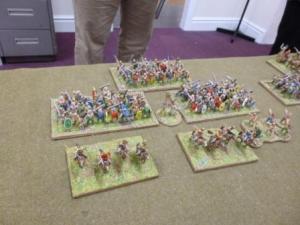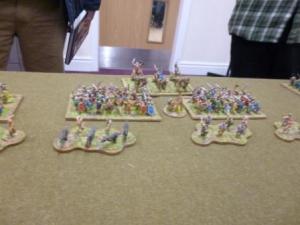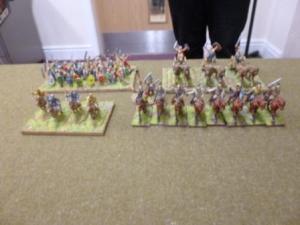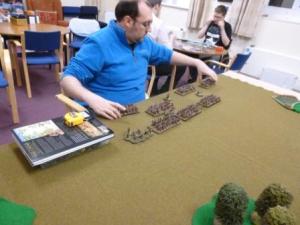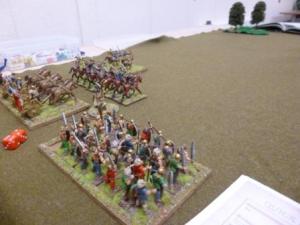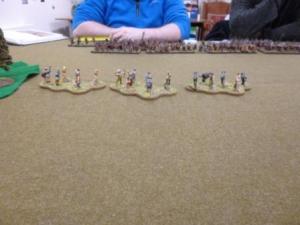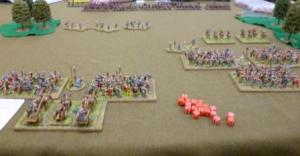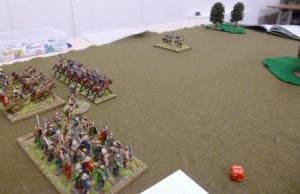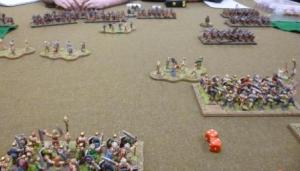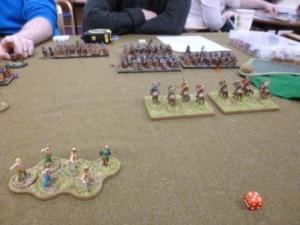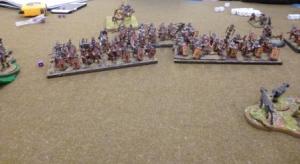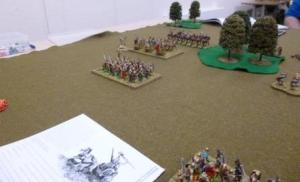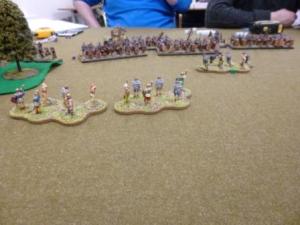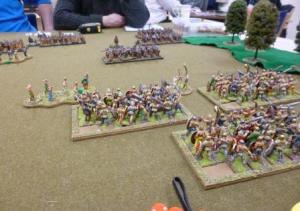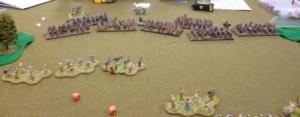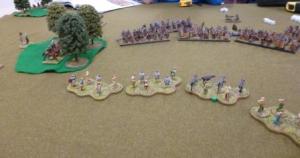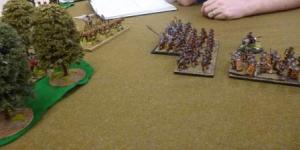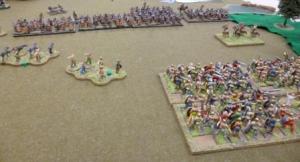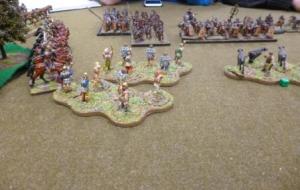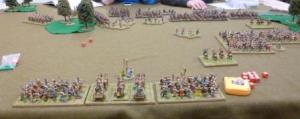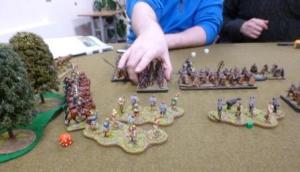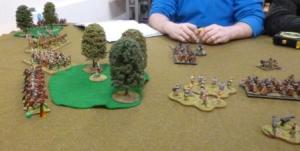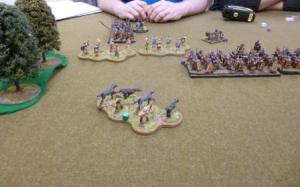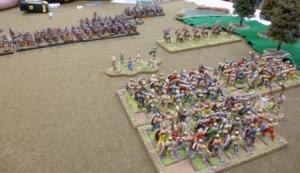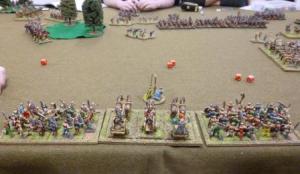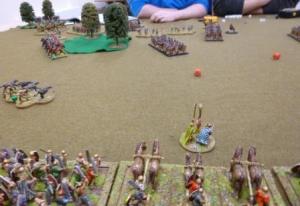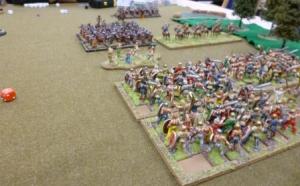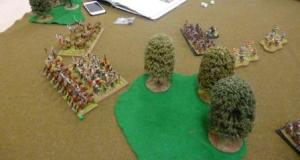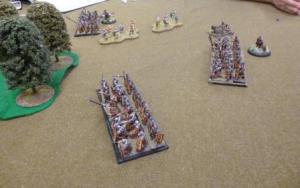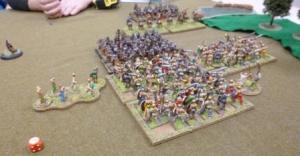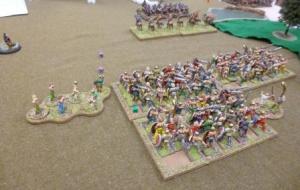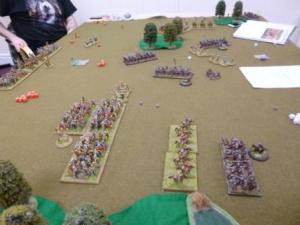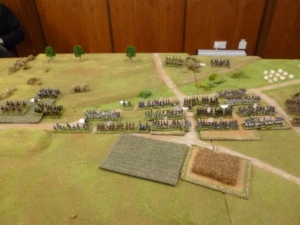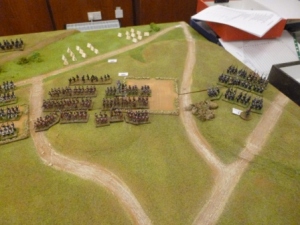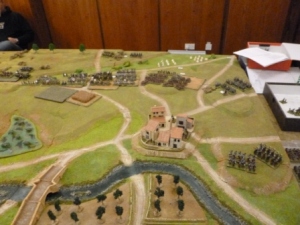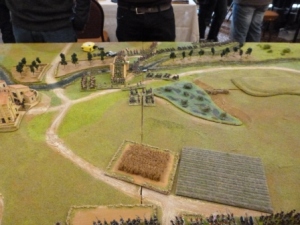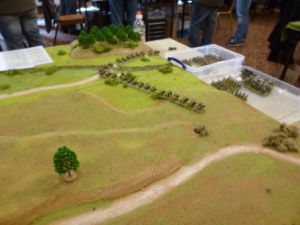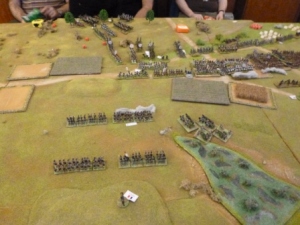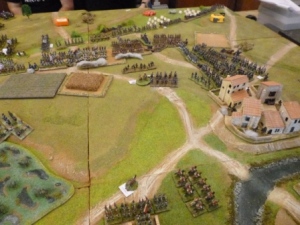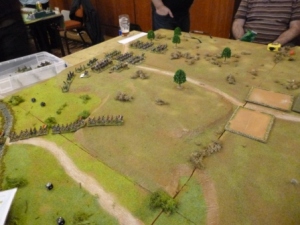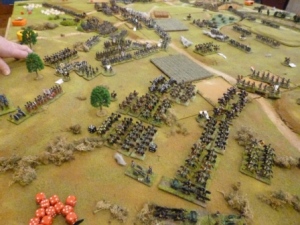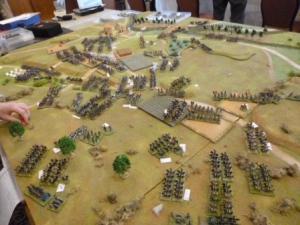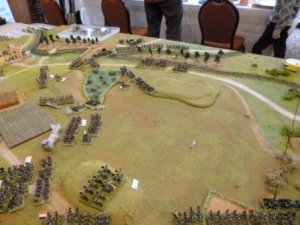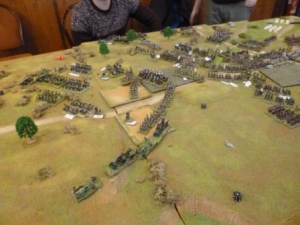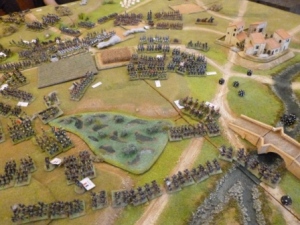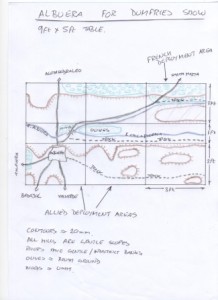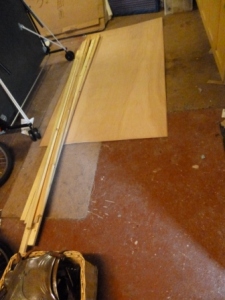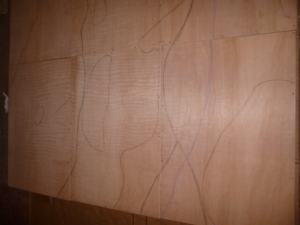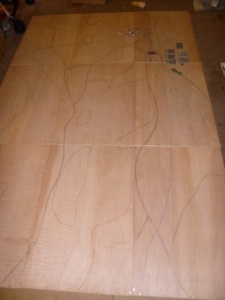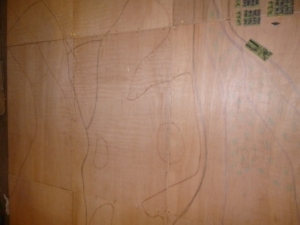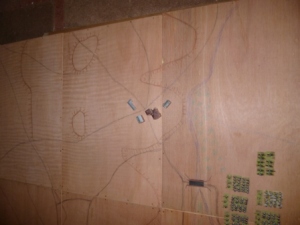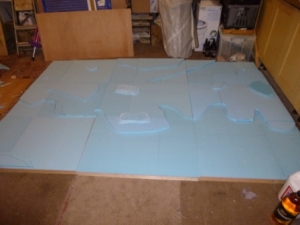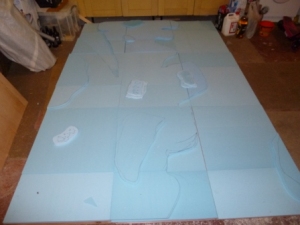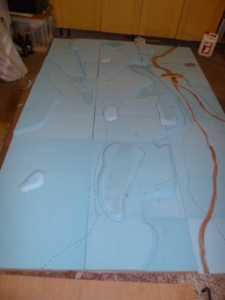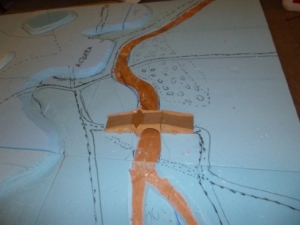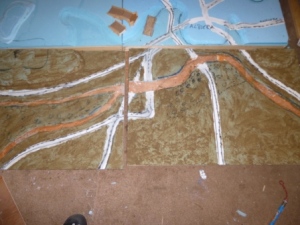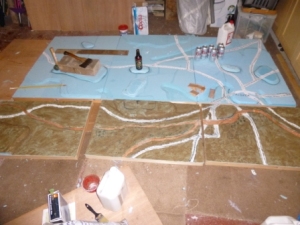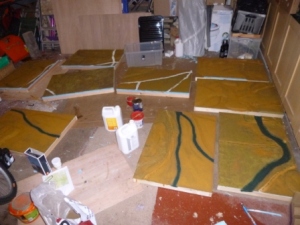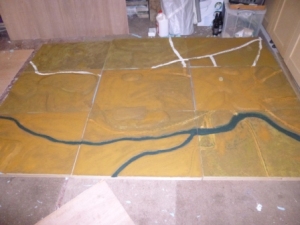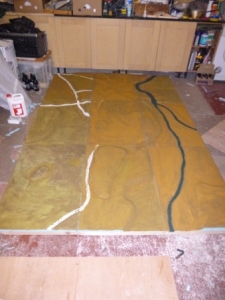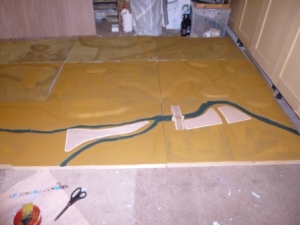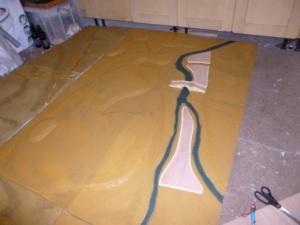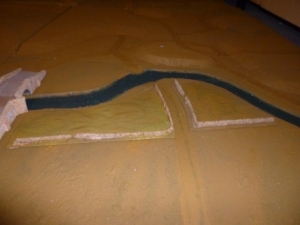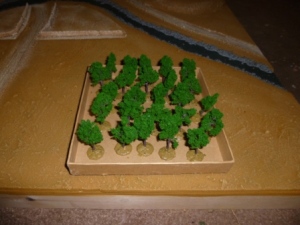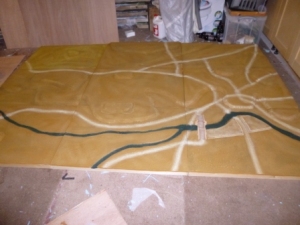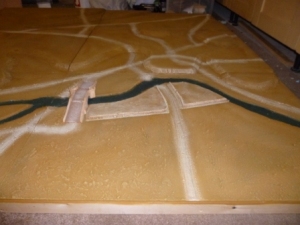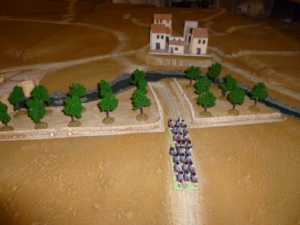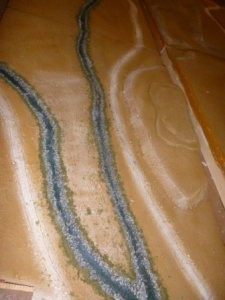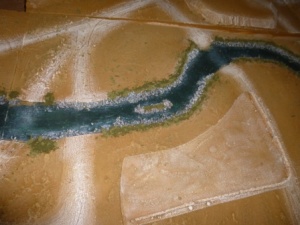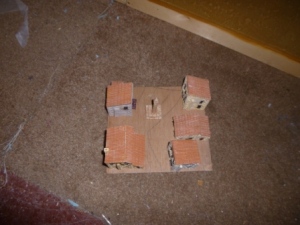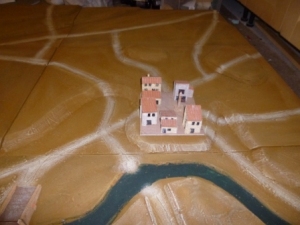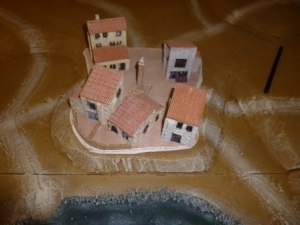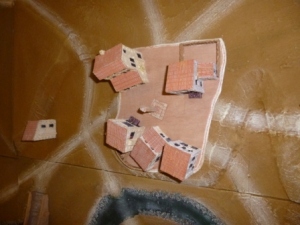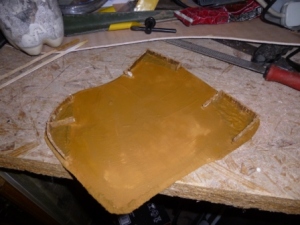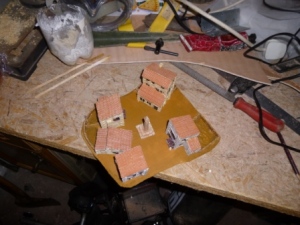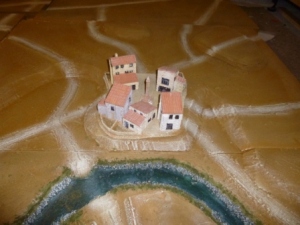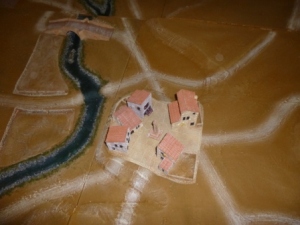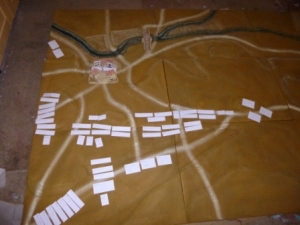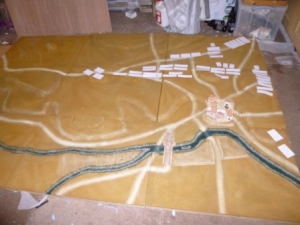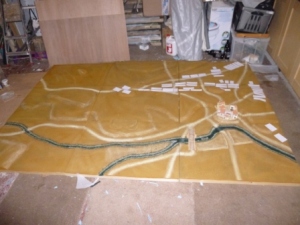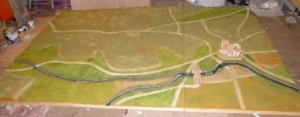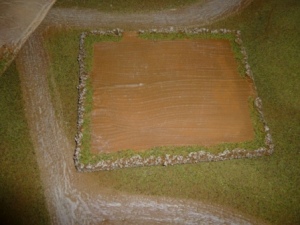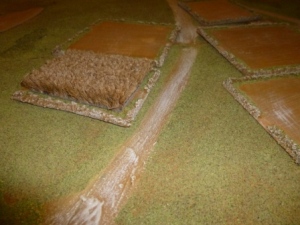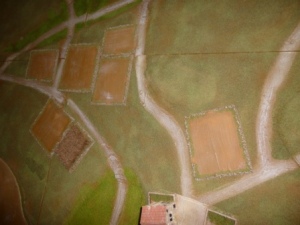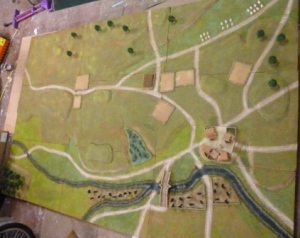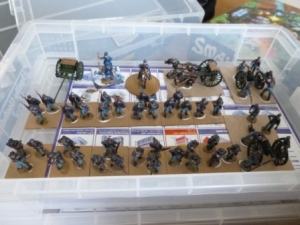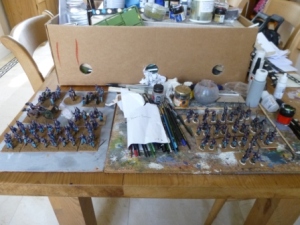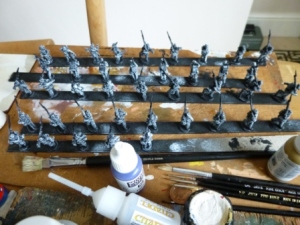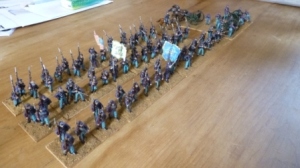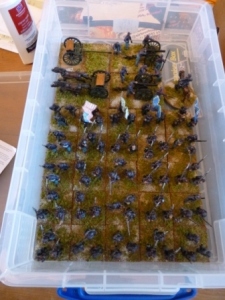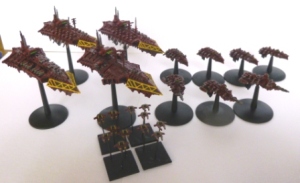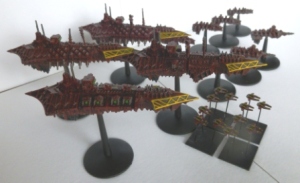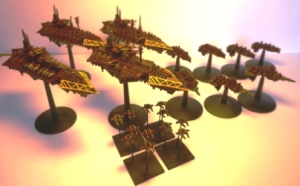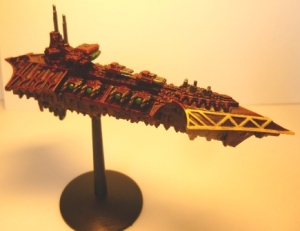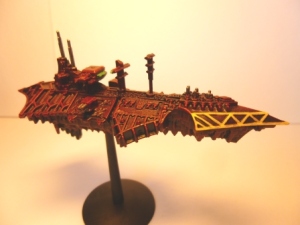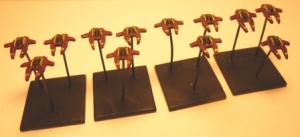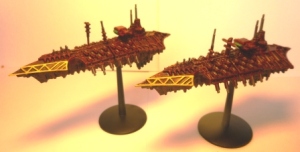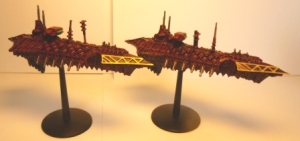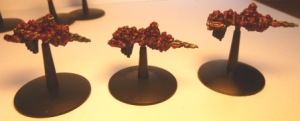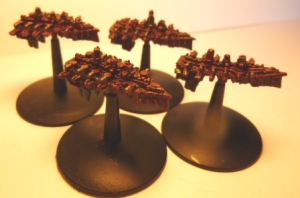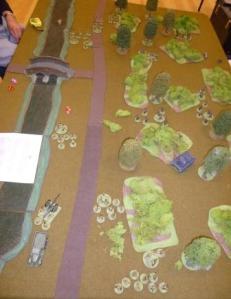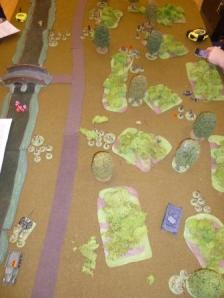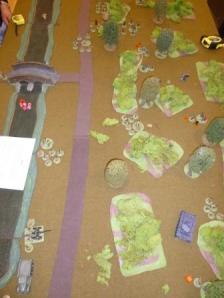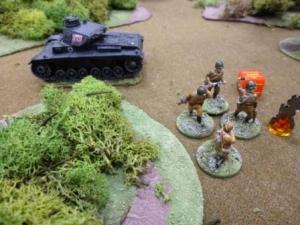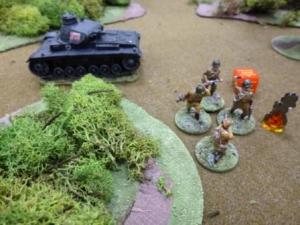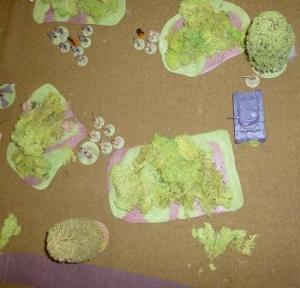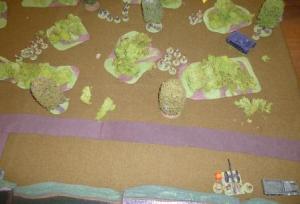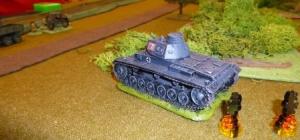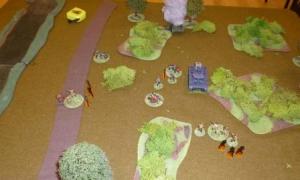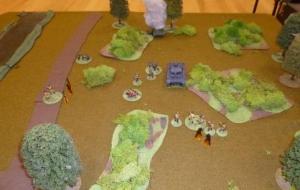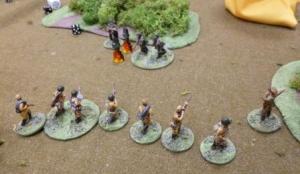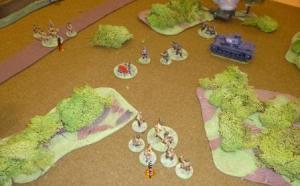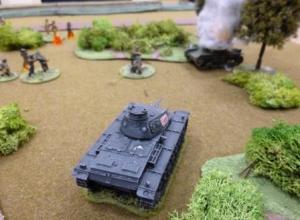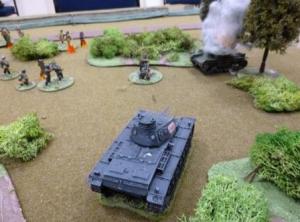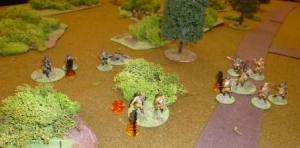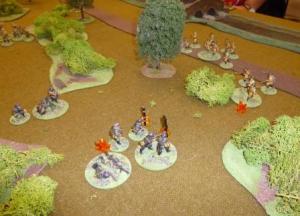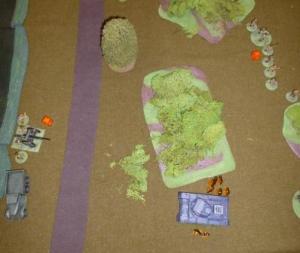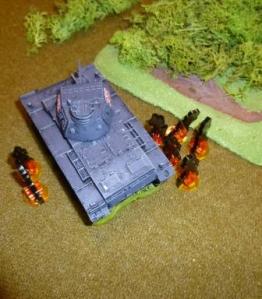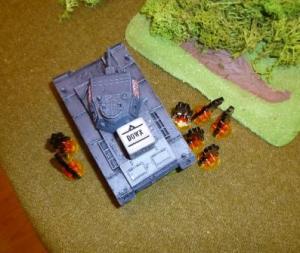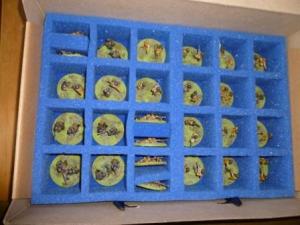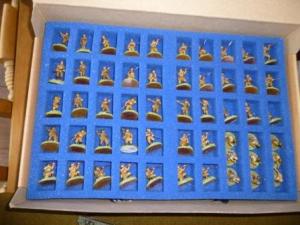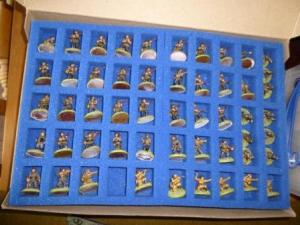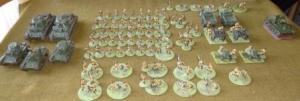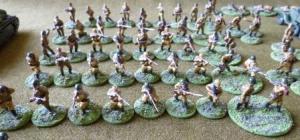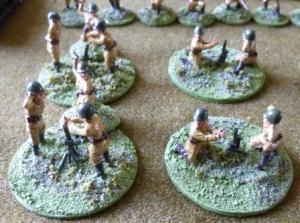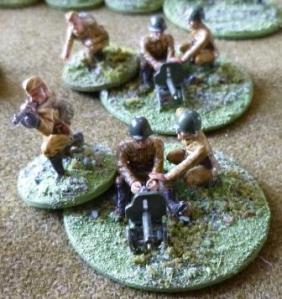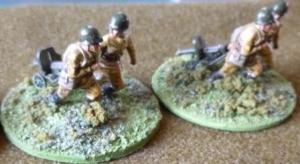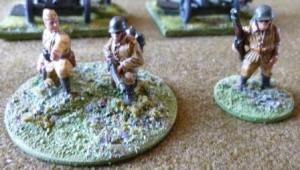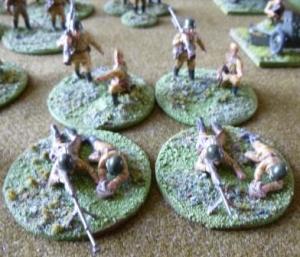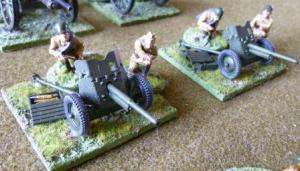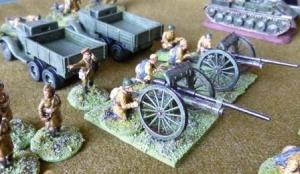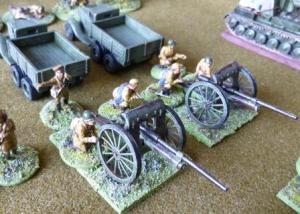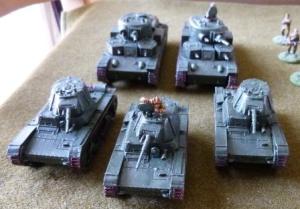This game should really be titled – “When the Roman commander can’t roll higher than a 3 on a D6 all night”…
Its been a while since we have played Hail Caesar by Warlord games so we were all a bit rusty on the rules and a few mistakes were made, more on those later. Nevertheless great fun was had as usual when using these rules.
The two armies are my Ancient Britons and Chris’ Romans. Both of these are fledgling armies as we try to work out what we both need to have a good game and get them painted. That said, my Ancient Britons are almost complete. On the other hand the Romans are really only the core units of an army.
This is the second time they have faced each other. Last time it was on a smaller table (6ft x 4ft) with no room to maneuver. That battle was a real meat grinder with the Briton skirmishers getting driven off and then the Warbands being ground down by the Romans. It was pretty bloody on both sides but ultimately a decisive Roman victory with most of the Britons being back in the ‘box’ before the battle ended. In that battle we even forgot to use the pilum special rule for the Romans. My over riding memory of that battle is the Romans saving almost every hit they suffered.
This time the Britons have expanded by three small units of light horse…the Romans were the same as last time. Their reinforcements have apparently not been issued with equipment yet i.e. they are not painted! We also used the new 8ft x 5ft table top that I have recently made, although the blanket did not cover it all (about 7ft x 5ft). Incidentally the blanket is a family heirloom of sorts. It is the last blanket my Grandad was issued during WW2…
We wanted a fairly simple game, so an open table was the order of the day.
Setting up:
The Britons were on the table pretty sharpish. There was no time to waste!. On the right wing Magicstix the Druid had 3 warbands, 2 small light horse, and a bunch of skirmishers with slings.
In the middle ‘the chieftan’ had 2 warbands, a unit of light chariots, 2 skirmishes with slings and a skirmishing unit of dogs (we give these stats equivalent to javelin armed skirmishers).
On the left wing a third command with 1 warband, 1 light chariot, 1 medium cavalry and a small unit of light horse. They were fidgeting about so the camera is a bit out of focus…
Opposite the Romans considered their deployment and adjusted themselves to make sure they were perfectly regular. It almost brought a tear to the eye to see them so neatly arranged as they faffed about adjusting half an inch here and there… 😛
The Plan…For the Britons the plan was to engage the Romans with skirmishers while the left wing advanced around their flank, and then charge in with a decisive blow.
For the Romans it was fairly clear they were going to form a continuous line between the woods and then steamroller everything in front of them at once. Just like last time…
First Turn
The Romans got first turn and shuffled forwards a little. Would you believe they fluffed all the command rolls and only moved at all because most of them have the ‘drilled’ special rule. We didn’t realise this was going to be pretty much how the whole night was going to go.
For the Britons. The left flank light horse decided that they really should be a lot further over to their left, rather than going forwards (blunder command roll!).
In the centre the skirmish screen ran forwards to engage the Roman line, the warbands staying behind to give the skirmishers room to maneuver. On the right Magicstix moved his command forward as one.
Second Turn
The Romans continued to shuffle forward in a continuous line, each legionnaire being careful to stay in line and not become exposed.
The light cavalry on the Briton left wing were now satisfied with their deployment and advanced. The rest of the left wing were a bit grumpy with their general attitude and decided to stay where they were (failed command). In the centre and on the right the skirmishers closed in to start pelting the Romans. They were unusually effective and Roman units began to suffer stamina reductions, clearly something was wrong with the Roman armour.
Third Turn
The Romans chased off the skirmishers in the centre by threatening to charge them. We (I) made a mistake at this point and we made the evade rolls before the checking to see if the Romans would make contact during their charge. The Romans continued to shuffle forwards, but the skirmishers ran for their lives…a good long distance! If we had done it properly the skirmishers would have stayed put as none of the Romans made a sufficiently decent charge move to make contact. They clearly were not in a mood to listen to orders… On the Roman left, we did the charge moves properly. The Roman infantry surged forwards to chase off the Briton light horse that was throwing pointy sticks at them, and the light horse ran off all the way back to their starting positions (annoying when they do a three move evade…).
At last the Briton left wing jumped into action and advanced. The light horse (see photo above) swept around the back of the Roman line making for the Scorpion ballista. In the centre the skirmishers returned to hassle the advancing Romans. On the right Magicstix was jumping in the air and waving his staff but nobody was listening, or could make out what he was getting excited about. The exposed unit of Romans that had chased off the light horse was left completely unmolested and the opportunity slipped by…(another failed command roll).
Fourth Turn
Roman auxiliary archers moved into the wood on the Roman right flank and crossed to the right hand edge to threaten the advancing Briton left wing cavalry (just out of shot on the photo). The exposed unit on the Roman left retired back into the battle line. At the back of the Roman line a unit of legionnaires tried to charge the light horse to their rear. They needed two moves to be successful (one to turn around and the next to charge), as we were beginning to expect, the command roll was failed and they only turned around on the spot because of the ‘drilled’ special rule.
The Briton light horse then charged the Roman Scorpion Ballistae… lost the combat, and ran for the hills in their shame (break result in the morale test)! The medium horse charged the auxiliary archers that were in the wood. We (I) made another mistake here…The horsemen needed to get a three move command to make the charge, they needed to turn to face the archers (which were on their flank), then adopt open order. And finally with the third move they could charge. To be on the safe side the Archers (in open order) elected to evade. The medium horse made the roll and got the required three moves…the archers then rolled for their evade and only got one move! Now the mistake happened, instead of the horsemen moving as infantry (6″) in the wood, they moved as cavalry (9″) and caught the evading archers who were then destroyed. If we had done it correctly they would have evaded the charge…
In the centre the skirmishers continued to pelt the Romans, and on the right Magicstix was still jumping up and down over the legionnaires that had managed to escape. Nobody was listening to him…
Fifth Turn
During the Briton fourth turn the light chariots had advanced around the edge of the wood to threaten the Roman flank but…one of the Roman units was facing to their rear (having failed to charge the light horse). Being rather rash, they decided to charge the chariots and did…the chariots counter charged, immediately disorganising the advancing infantry and then proceeded to batter them in the melee. After the melee the Romans retreated, but the chariots declined to follow up. Elsewhere the Roman line stood splendidly still and attempted to throw javelins and send out small groups to chase off the skirmishers which had been pelting them continuously. They (the Romans) were not very successful in their endeavours…
On the Briton right flank Magicstix had finally calmed down enough to be shouting actual words, and his light horse swept forwards to re-engage the Romans.
On the Briton left the time was now! The Roman right flank was in disarray! The warband on the left flank raced to get around the wood and the cavalry prepared to charge the disorganised legionnaires. They needed a three move command to get out of the wood, form back into close order and then charge…! They actually only got one move. Disaster! they were now out of the wood right in front of formed heavy infantry, and in open order! To protect them the Briton chief ordered his skirmishers to close on the flank of the Romans to try and prevent the inevitable charge in the next turn that would be so costly to the medium cavalry. He then commanded his 2 warbands and light chariots to charge the Roman line! They were having none of it and decided a better coarse of action was to retreat (blunder – result two moves to the rear)! At this point they ‘should’ have been moved off the table but again we (I) made a mistake and just moved them to the base edge.
And then the shooting began…The second unit on the Roman left flank (behind the ones that had retreated from the chariots) were Praetorians. In a desperate bid to try and save the cavalry the Britons threw everything at them. Their armour was decidedly lacking whilst the Briton cavalry javelins and slingers made their presence felt, almost every shot casued a reduction in unit stamina and then horror of horrors (if you were Roman)…a morale test was required…the dice rolled, they clacked together…they spun slowly…you know what is coming….”snake eyes”. Goodbye Praetorians, it was unpleasant knowing you.
Sixth Turn
The Romans were feeling a bit bleak…they needed something. So, the ballistae shot at the cavalry in desperation, and the Briton cavalry were unnerved and ran off in disorder to the other side of the wood. The legionnaires then threw javelins at the light chariots and chased them away in disorder too… Another unit of Legionnaires charged forward to chase off the bothersome skirmishers, who simply skipped away.
On the Roman right Magicstix had ‘played a blinder’. Whether by luck or judgement (lets go with judgement) the unit of light horse between the lines of Britons and Romans was perfectly placed so that if the Romans charged as a Division they would only get as far as the intervening, lets call them ‘speed bump’ and then have to stop to fight. They would then be too far away from the main Briton line that even a sweeping advance would not get them into combat. Feeling demoralised the Roman commander decided not to charge.
On the Briton left, the chariots and medium cavalry could do nothing. The warband was commanded to charge around the wood and engage the Romans. They sort of listened but did it their own way (blunder – uncontrolled advance for 1 move). In the centre, skirmishers closed in around the exposed legionnaires that were still in a sorry state after their chariot affair (since the warband had neglected to become involved).
On the right Magicstix persuaded his other unit of light horse to join the first and between them both they managed to cause the Praetorians to their front to retire in disorder.
Perhaps you are wondering where the Briton chief is with his warbands and light chariots in the centre of the Briton line? Well, he was still issuing commands…they just weren’t listening.
Seventh Turn
On the Roman right the legionnaires at the back tried to escape the skirmishers by charging at the warband that had began to come around the edge of the wood. They fluffed the command roll and only advanced one move forwards because of the ‘drilled’ special rule. As a consolatory prize the ensuing volley of javelins they launched disordered the warband.
The other roman units on the right flank tried to chase off the skirmishers but either didn’t get enough of a move to make contact, or where they did the skirmishers managed to successfully evade them.
On the Roman left. The Praetorians failed to recover from disorder (they are elite 4+…) and the other legionnaires attempted to charge the Briton warbands to their front. This time it was inevitable…if they got the charge distance then they would either chase off the skirmishers and then contact the warbands behind. Or fight the skirmishers and be able to charge the warbands in a sweeping advance afterwards. All they needed was to get a two move charge…all they needed was to roll two under the command requirement…and…they rolled…and they got…one move! So ground to a halt in front of the skirmishers!
On the Briton left. The skirmishers continued to pelt the hapless legionnaires in the rearmost unit. The Briton cavalry managed to form into close order at last, in position behind the disorganised warband. In the following shooting the Romans were at last reduced to ‘shaken’.
This is the view from the Briton’s chief…
A lovely exposed Roman flank, just ripe for a unit of Light Chariots to go and cause some mischief. And did they? No they did not, another failed command roll!
Meanwhile on the Briton right flank Magicstix had order his whole command of Warbands to charge, after moving his skirmishers out of the way (with an initiative move). It was perfect! A warband on its first charge, supported to right, left and behind against a Roman unit which only had rear support!
The melee was impressive! Even with their pilum the Romans managed only 3 successful points of stamina off the Britons. In return they suffered 8! (We give the warbands the’ wild fighters 3′ special rule as per the scenario in the Hail Caesar rule book). The Romans needed a break test. They needed to roll well… And they did! Retreat one move in disorder but then when we came to move them, because of the angle of their initial charge the Briton light cavalry was now behind them…preventing their retreat. Awesome planning from the Druid, he must have foreseen it!
Result = two Roman units destroyed!
Eighth Turn
The Romans were in trouble now. One Division (on their left) was broken, another (on their right) had all commands shaken. It was down to a roll of the dice, could they rally the shaken legionnaires on their right flank to prevent the army being broken…No.
And that was that.
An excellent game of Hail Caesar and the first time in about five years, in fact the first time ever that the Britons have won against the Romans. All those years of playing Warhammer Ancients and being unceremoniously destroyed can now be forgotten. And the less said about Chris and Dean’s appalling luck with the dice the better.
Thanks to Chris and Dean the hapless Roman commanders, Michael (Briton left flank) and Nigel (Magicstix the Druid). For my part I’ll take all the glory thank you very much as the victorious Briton Chieftan even though the centre Warbands and Light Chariots refused to listen to me all battle…
